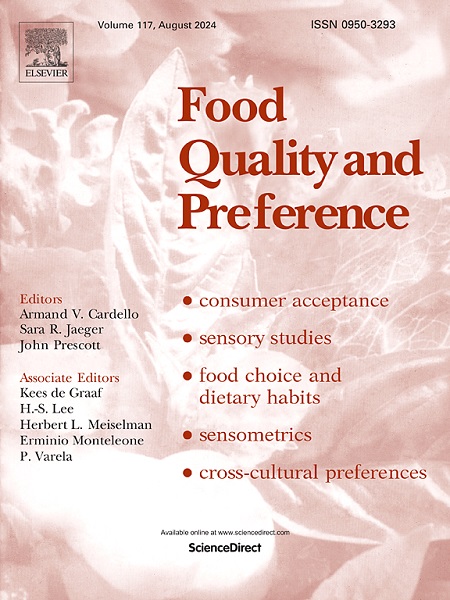警告标签、声明和品牌对巴西60岁以上消费者食品选择的相对影响
IF 4.9
1区 农林科学
Q1 FOOD SCIENCE & TECHNOLOGY
引用次数: 0
摘要
营养在维持老年人的健康和生活质量方面起着至关重要的作用。因此,旨在提高饮食质量的策略是高度相关的。这项工作的目的是评估包装前警告标签对60岁以上生活在巴西的消费者的食品选择的相对影响。通过Instagram广告招募了1125名60岁以上的参与者。他们被随机分配到四个实验组,考虑两个2级变量:警告标签的类型(黑色放大镜vs黑色八边形)和警告标签的信息(有信息vs没有信息)。四组中的每组参与者都完成了一项选择联合任务,涉及产品类别(奶油奶酪、果汁、吐司和酸奶)的配对,这些产品类别在四个变量上有所不同:商业“品牌”(熟悉与陌生)、“营养声明”(存在与不存在)、“感官声明”(存在与不存在)和“警告标签”(存在与不存在)。数据分析采用混合logit模型。结果显示,在某些类别中,警告标签的类型有显著的影响,在阻止不健康食品的选择方面,放大镜比八角形更有效。然而,“品牌”是最相关的变量,在某些类别中,“营养声明”的影响超过了“警告标签”的影响。在选择任务之前接触有关警告的信息降低了“品牌”的重要性,并倾向于增加“警告标签”和“营养声明”的影响。这些结果突出表明需要实施战略,促进老年消费者使用警语。本文章由计算机程序翻译,如有差异,请以英文原文为准。
The relative effect of warning labels, claims, and brand on the food choices of consumers over 60 years of age living in Brazil
Nutrition plays a crucial role in maintaining health and quality of life in old age. Therefore, strategies aimed at improving diet quality are highly relevant. The objective of this work was to evaluate the relative effect of front-of-package warning labels on the food choices of consumers over 60 years of age living in Brazil. A total of 1125 participants over 60 years old were recruited using an Instagram advertisement. They were randomly allocated to four experimental groups, defined considering two 2-level variables: type of warning label (black magnifier vs. black octagon) and information about warning labels (with information vs. no information). Participants in each of the four groups completed a choice-conjoint task involving pairs of product categories (cream cheese, juice, toasts, and yogurt) differing in four variables: commercial “Brand” (familiar vs. unfamiliar), “Nutrition claims” (present vs. absent), “Sensory claims” (present vs. absent) and “Warning label” (present vs. absent). Data were analyzed using mixed logit models. Results revealed a significant effect of type of warning label in some categories, with the magnifier being more effective than the octagon in discouraging unhealthy food choices. However, “Brand” was the most relevant variable and, in some categories, “Nutrition claims” outweighed the effect of “Warning labels”. Exposure to information about the warnings prior to the choice-task reduced the importance of the “Brand” and tended to increase the effect of the “Warnings labels” and “Nutrition claims”. These results highlight the need to implement strategies to promote the use of warnings among older consumers.
求助全文
通过发布文献求助,成功后即可免费获取论文全文。
去求助
来源期刊

Food Quality and Preference
工程技术-食品科技
CiteScore
10.40
自引率
15.10%
发文量
263
审稿时长
38 days
期刊介绍:
Food Quality and Preference is a journal devoted to sensory, consumer and behavioural research in food and non-food products. It publishes original research, critical reviews, and short communications in sensory and consumer science, and sensometrics. In addition, the journal publishes special invited issues on important timely topics and from relevant conferences. These are aimed at bridging the gap between research and application, bringing together authors and readers in consumer and market research, sensory science, sensometrics and sensory evaluation, nutrition and food choice, as well as food research, product development and sensory quality assurance. Submissions to Food Quality and Preference are limited to papers that include some form of human measurement; papers that are limited to physical/chemical measures or the routine application of sensory, consumer or econometric analysis will not be considered unless they specifically make a novel scientific contribution in line with the journal''s coverage as outlined below.
 求助内容:
求助内容: 应助结果提醒方式:
应助结果提醒方式:


